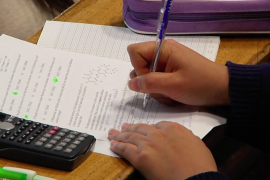There are many definitions of what active learning is. One of the simplest comes from the National Survey of Student Engagement (NSSE) in North America and the Australasian Survey of Student Engagement (AUSSE); active learning involves:
students’ efforts to actively construct their knowledge.
In their influential and highly cited study, Bonwell and Eison (1991) define teaching approaches that promote active learning as:
instructional activities involving students in doing things and thinking about what they are doing
Active learning is thus based on constructivism – the idea that learners construct knowledge, rather than just passively taking in information, through discovery and integration with what they already know. In social constructivist approaches (Vygotsky, 1978), the importance of positive interactions between students and their educators in the learning process is emphasised. These approaches also stress the role of collaborative learning and peer-to-peer interactions over competitive models.
The 2016-2020 Strategic Plan sought to ‘develop interactive and collaborative learning designs’ based on these ideas. The pandemic has provided our own experiential classroom to test them. After the rapid switch to remote delivery in the first part of 2020 and the development of our approaches since then, including rich feedback from Sydney staff and students of their experiences, many have begun to build and experiment with such learning designs. These experiences also show a renewed emphasis on the importance of teacher-student and student-student relationships in supporting learning. As we work together to build on the lessons learnt during the pandemic and design the classroom for the ‘new normal’, it seems a good moment to reflect in this article on what the literature and research says about the effectiveness of active learning.
TL;DR
Active learning approaches work: they produce better outcomes for students. Reluctance to adopting active learning approaches may reflect some students’ mistaken belief that they learn more efficiently through passive models and the fact that many educators have themselves succeeded in traditional classrooms.
Active learning improves student outcomes
Probably the most influential and widely cited publication examining the positive benefits of active learning is the meta-analysis of 225 papers by Freeman and colleagues1. The analysis and the implications of this study, “Active learning increases student performance in science, engineering, and mathematics”, have been discussed and referenced by a wide range of influential bodies and people. Most famously, Clarissa Dirks, then co-chair of the US National Academies Scientific Teaching Alliance, told Nature News that:
At this point it is unethical to teach any other way
The analysis by Freeman and colleagues included studies which compared failure rates and formative and summative assessment outcomes for classes designed with at least some active learning against those using traditional lecturing. Their analysis is both statistically thorough and compelling:
- Students in courses with traditional lectures were 1.5 times more likely to fail than those with active learning
- On average, performance in assessments were improved by about half a standard deviation in courses with active learning
- These gains were effectively the same in all of the disciplines covered (biology, chemistry, computer science, engineering, geology, maths, physics and psychology)
In summarising the evidence from the study, the authors conclude that:
If the experiments analyzed here had been conducted as randomized controlled trials of medical interventions, they may have been stopped for benefit – meaning that enrolling patients in the control condition might be discontinued because the treatment being tested was clearly more beneficial.
Similar results have been reported in other analyses across science, mathematics, engineering, and technology, including those by Prince (2004), Springer et al (1999) and Ruiz-Primo et al (2011). Although these papers focus on STEM, there is also clear evidence, for example in the influential principles set out by Ambrose et al (2010)2 and by Chickering & Gamson (1987)3, for the effectiveness of active learning approaches across all disciplines.
In their in-depth ‘meta-meta-analysis’, Schneider and Preckel (2017)4 analysed 38 meta-analyses, covering around 2 million students, on what leads to improved outcomes in higher education. Their superb review covers a lot of ground and is a highly recommended read and a separate analysis is available in a complementary article. Of most relevance to the effects of active learning approaches, they show that:
- How educators teach is critically important to student outcomes, even in higher education
- Even small and easy to implement changes in teaching style can lead to large gains in student achievement
- A combination of teacher- and student-centred approaches is more effective than either form in isolation
- Collaborative, social forms of learning are highly effective but need teachers to prepare and guide the students’ activities and interactions
- Educational technologies are most effective when they complement interaction facilitated by educators rather than replace it.
Active learning reduces achievement gaps and is more inclusive
As described above, active learning improves educational outcomes for all students. There is, however, considerable evidence that such approaches narrow achievement gaps for students from underrepresented groups and are more inclusive. Theobald et al (2020)5 analysed 15 studies of examination scores and 26 studies of failure rates on the performance of underrepresented and overrepresented students in courses taught through active learning and traditional lecturing. They report that active learning improved outcomes for all students but, stunningly, reduced achievement gaps in examination scores and passing rates by 33% and 45% respectively. Once underrepresented students pass their first courses, they then “hyperpersist”. As described by Freeman (2020) “They show grit. And changes to how we teach can lift more underrepresented students into that hyperpersistent zone.”
The authors propose that “deliberate practice and a culture of inclusion” or “heads and hearts” approaches are required in the design and implementation of courses that reduce achievement gaps. The best practice active learning strategies they advocate are (1) extensive and highly focused efforts geared toward improving performance, (2) scaffolded exercises, (3) immediate feedback and (4) repetition. Inclusive teaching, in the active learning environment, involves treating all students with dignity and respect, and showing genuine interest in their personal and academic success. High-intensity active learning approaches help to make up for reduced prior learning and reduce imposter syndrome and stereotype threat (Trujillo & Tanner, 2014):
All students benefit from classroom cultures that promote self-efficacy, identity as a scientist, and sense of belonging
Interactive engagement methods that “reduce competition, foster collaboration, and emphasize conceptual understanding” have been shown (Lorenzo et al, 2006) to increase performance for both male and female students and to completely remove the pre-instruction gender gap. Such approaches have also been demonstrated to work in the humanities, such as economics (Miller-Cotto & Schunn, 2020). Given the evidence for the effect of active learning of reducing achievement gaps, Freeman and Theobald (2020) argue that:
For colleges to achieve antiracism, equity and inclusion, one of the most effective actions will be for professors to stop talking so much in their classrooms
Anxiety, self-efficacy and the importance of students’ trust in their educators
The implementation of active learning approaches can lead to increases or decreases in student anxiety and self-efficacy (Cooper et al, 2018 and Hood et al, 2021). For some students, group work can cause particular anxieties requiring careful facilitation by educators to foster collaboration over competition. Similarly, in discussions, choosing ways to obtain feedback anonymously, such as polling software, rather than through “cold calling” can help reduce fears of being unfavourably evaluated in social situations. The design and selection of active learning approaches should acknowledge that “academic self-efficacy and social anxiety play important roles in influencing students’ perceptions of an active-learning classroom and that these factors may affect students’ degree of engagement” (Hood et al, 2021).
Boosting self-efficacy early in a course can help to improve both students’ perceptions of active learning but also their outcomes. A particularly pertinent example of where legitimate anxiety can collide with educators’ desire to promote engagement, active learning, and connection is the phenomenon of students not turning their cameras on during Zoom classes (Castelli & Sarvary, 2021). As active learning requires more engagement from students for its success, student trust of their educator is crucial. Cavanagh et al (2018) report a strong relationship between trust, commitment to active learning, engagement, and the final assessment grade. The study highlights the importance of building positive and supportive relationships which demonstrate “understanding, acceptance and care”.
Actual learning increases even if perception of learning doesn’t
Students’ perceptions of their learning, as self reported in student evaluations, can provide valuable insights into what teaching strategies work. They are also sometimes used as a proxy of teaching quality. A number of studies suggest that resistance amongst educators to the adoption of active learning approaches stems from a belief that students prefer lectures (Fagan et al, 2002 and Henderson & Dancy, 2007), do not like working together (Felder & Brent, 1996 and Henderson & Dancy, 2012), that it causes students to be more anxious (Cohen et al, 2019 and Downing et al, 2020), and that peer-to-peer learning amounts to the “blind leading the blind“. Most educators themselves succeeded academically in courses delivered primarily through lecturers and may prioritise their own experiences as students (Andrews & Lemons, 2017) over the empirical evidence.
In the study by Deslauriers et al (2019)6, two groups of students were taught the same content but with one group receiving active instruction and the other receiving passive instruction (i.e. lectures) – the main difference being whether the students were first asked to solve problems in groups or were directly told how to solve the problems. As would be expected from the studies described above, the students taught using active learning approaches had better outcomes (as measured through quizzes). Their perception of learning was also positive, but it was lower than that of the students in the passive classrooms! The authors suggest that:
when students experience the increased cognitive effort associated with active learning, they initially take that effort to signify poorer learning.
Preparing students and scaffolding active learning is important to ensure that there is no negative effect on motivation or self-efficacy (Tharayil et al, 2018). Deslauriers also suggests that the study shows ‘the dangers of fluent lectures‘:
A “superstar” lecturer could make some students feel good about learning at the expense of demonstrably more effective active experiences.
Further reading
-
- Freeman, S., Eddy, S. L., McDonough, M., Smith, M. K., Okoroafor, N., Jordt, H., & Wenderoth, M. P. (2014). Active learning increases student performance in science, engineering, and mathematics. Proceedings of the National Academy of Sciences, 111(23), 8410-8415. https://doi.org/10.1073/pnas.1319030111
- Ambrose, S. A., Bridges, M. W., DiPietro, M., Lovett, M. C., & Norman, M. K. (2010). How learning works: Seven research-based principles for smart teaching. John Wiley & Sons.
- Chickering, A. W., & Gamson, Z. F. (1987). Seven principles for good practice in undergraduate education. AAHE bulletin, 3, 7.
- Schneider, M., & Preckel, F. (2017). Variables associated with achievement in higher education: A systematic review of meta-analyses. Psychological bulletin, 143(6), 565. https://doi.org/10.1037/bul0000098
- Theobald, E. J., Hill, M. J., Tran, E., Agrawal, S., Arroyo, E. N., Behling, S., Chambwe, N., Cintrón, D. L., Cooper, J. D., Dunster, G., Grummer, J. A., Hennessey, K., Hsiao, J., Iranon, N., Jones, L., Jordt, H., Keller, M., Lacey, M. E., Littlefield, C. E., Lowe, A., Newman, S., Okolo, V., Olroyd, S., Peecook, B. R., Pickett, S. B., Slager, D. L., Caviedes-Solis, I. W., Stanchak, K. E., Sundaravardan, V., Valdebenito, C., Williams, C. R., Zinsli, K. & Freeman S. (2020). Active learning narrows achievement gaps for underrepresented students in undergraduate science, technology, engineering, and math, Proceedings of the National Academy of Sciences,
- Deslauriers, L., McCarty, L. S., Miller, K., Callaghan, K., & Kestin, G. (2019). Measuring actual learning versus feeling of learning in response to being actively engaged in the classroom. Proceedings of the National Academy of Sciences, 116(39), 19251-19257. https://doi.org/10.1073/pnas.1821936116






5 Comments